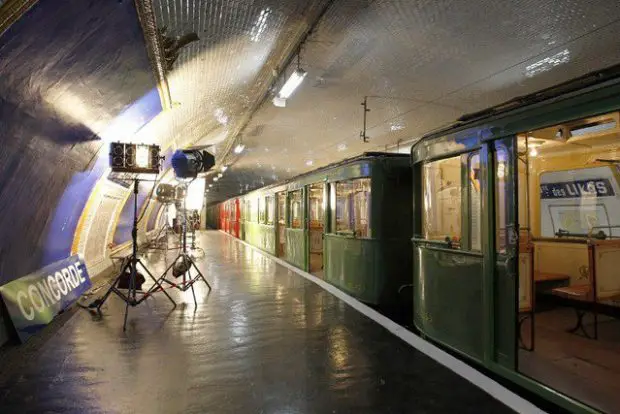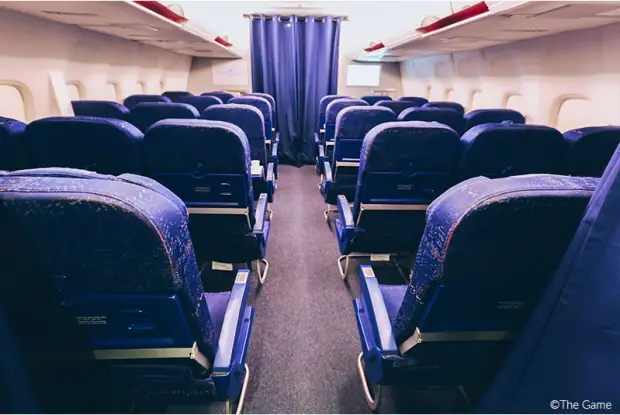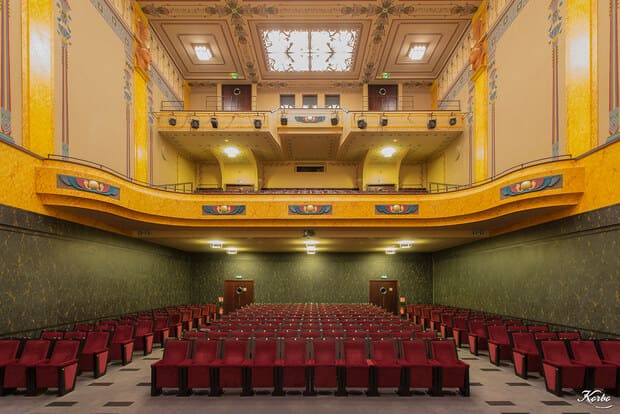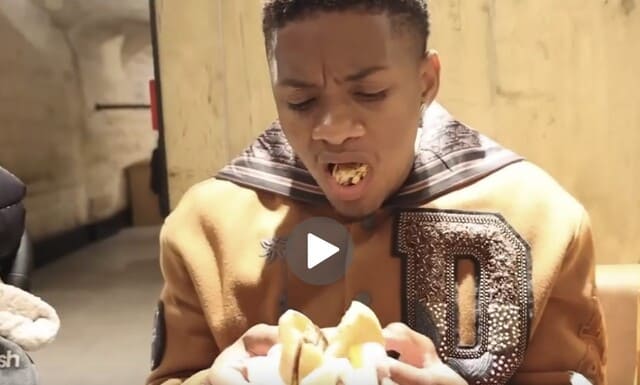In 1889, Paris hosted the Exposition Universelle, a grand celebration of progress and culture. The city dazzled with new inventions, global exhibits, and the towering Eiffel Tower, the fair’s most talked-about attraction.
Beyond the expo, bustling markets, elegant fashion, and lively nightlife filled the streets. As night fell, thousands of electric lights transformed Paris into a glowing spectacle.
Step back in time and discover the magic of Paris during this unforgettable event.
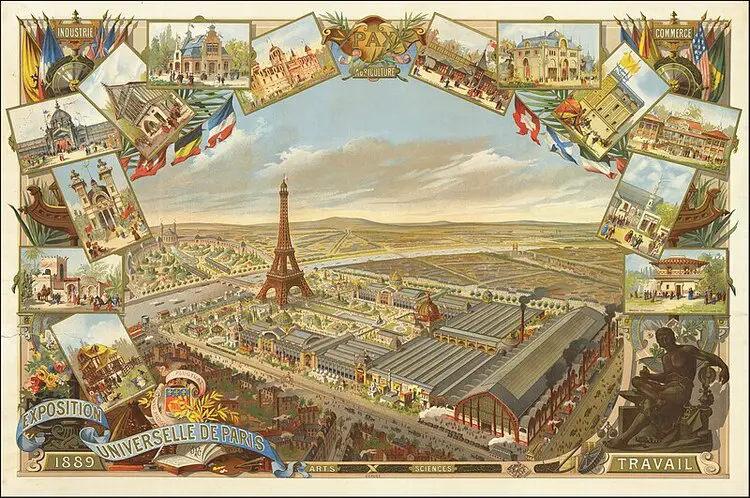
The Arrival Experience
As visitors stepped off trains at Gare Saint-Lazare or Gare de Lyon, they were met with the bustling energy of Paris.
Vendors sold souvenirs, newspapers announced fair events, and horse-drawn carriages waited to take travelers through the lively streets.
The smell of fresh bread from bakeries mixed with the smoky air of steam locomotives.
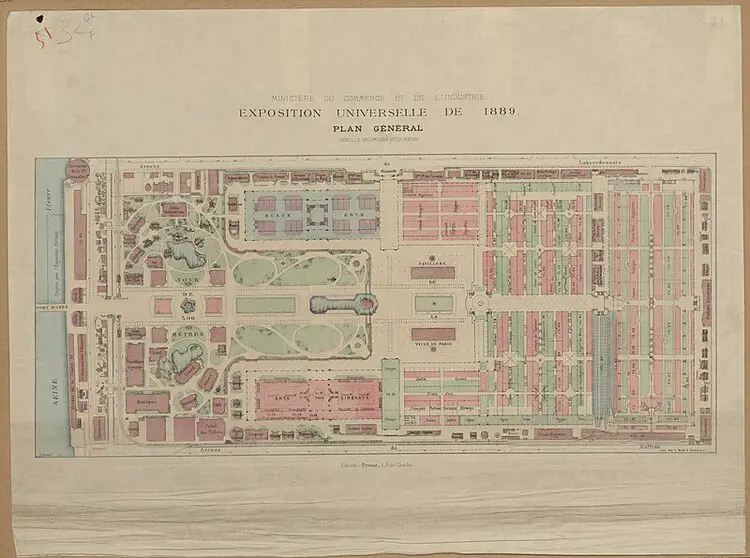
At the Champ de Mars entrance, two towering pylons topped with golden statues welcomed visitors.
At night, thousands of electric lights illuminated the scene, creating a dazzling spectacle.
People gathered in amazement, surrounded by the sounds of music, shouting vendors, and excited chatter.
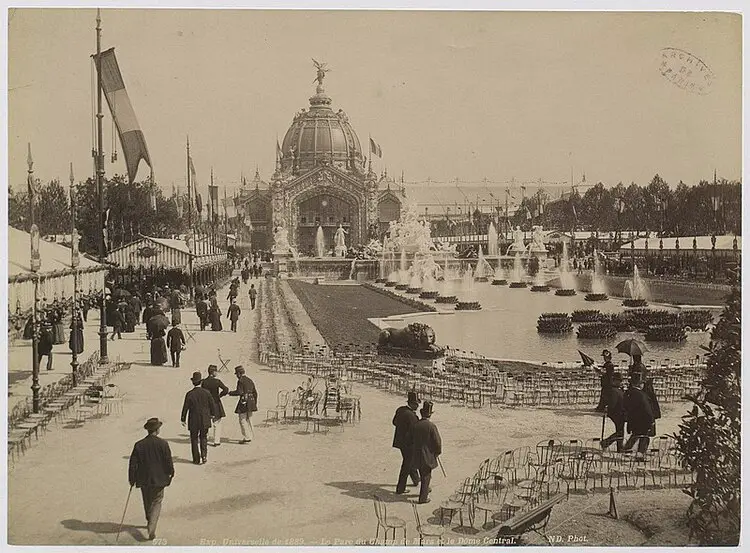
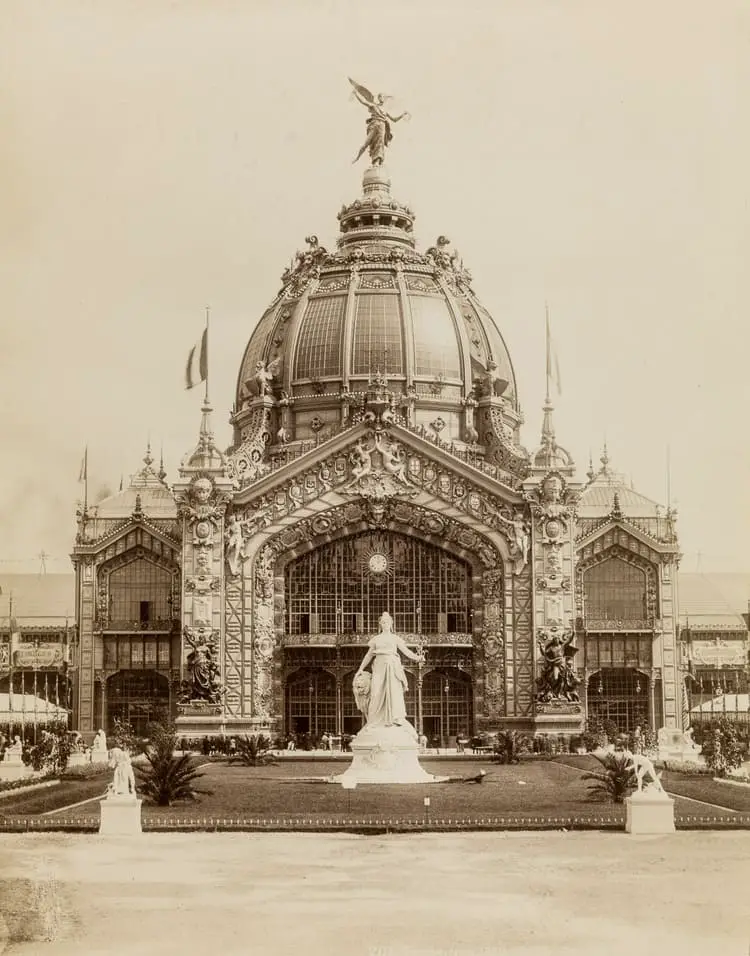
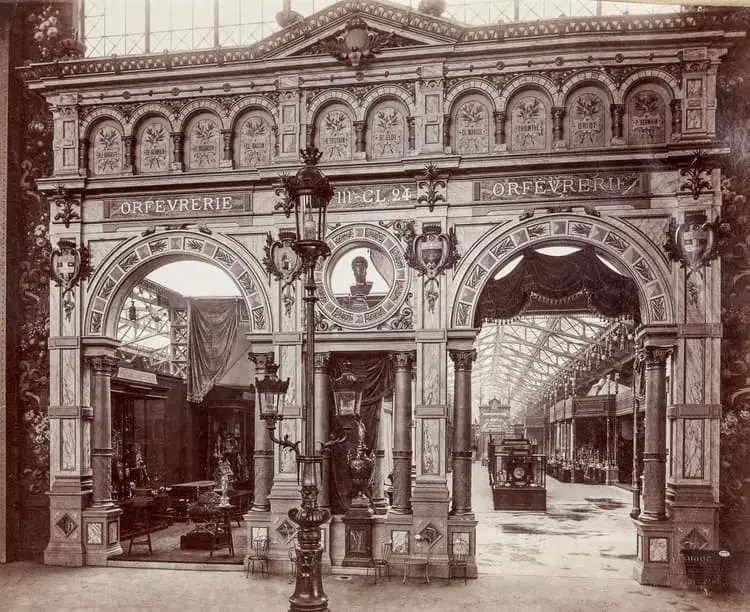
Beyond the entrance, a wide promenade stretched ahead, lined with pavilions built in Moorish, Chinese, and classical European styles.
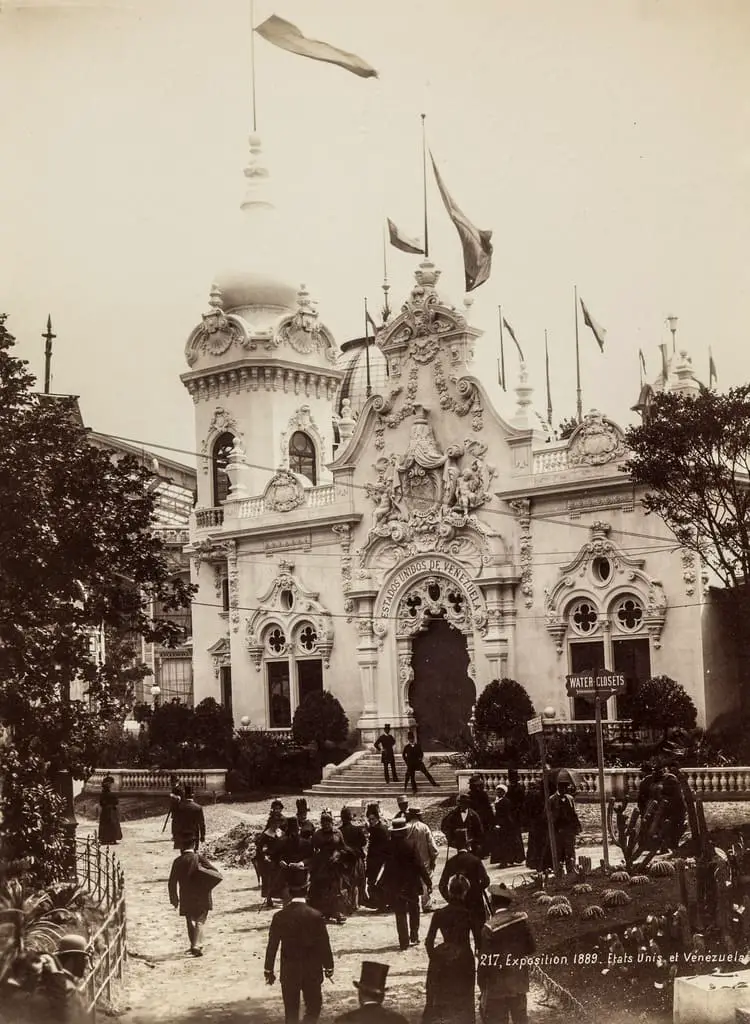
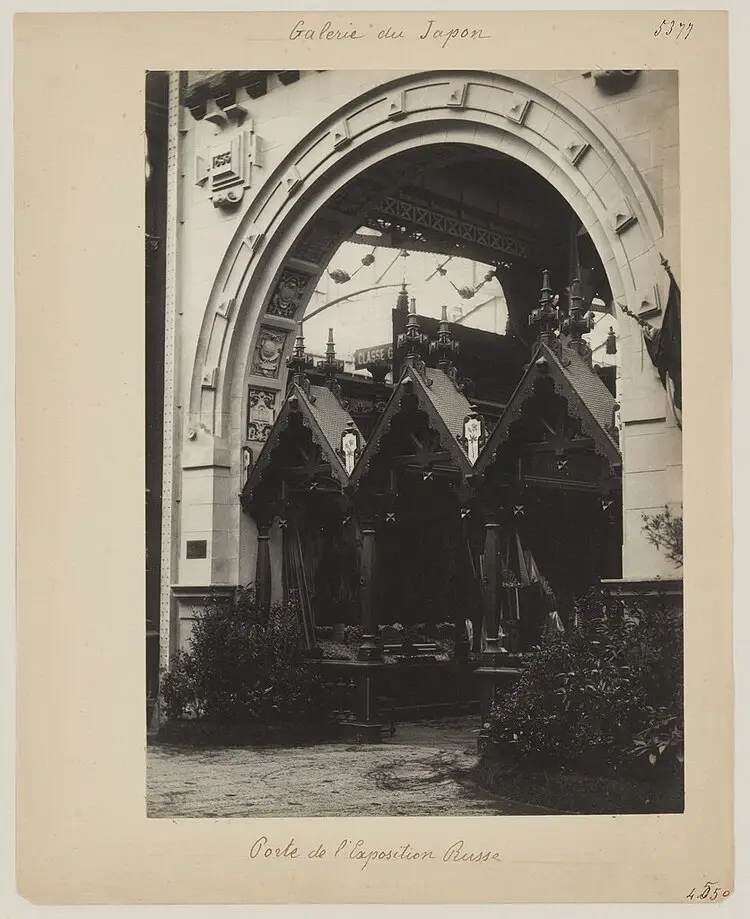
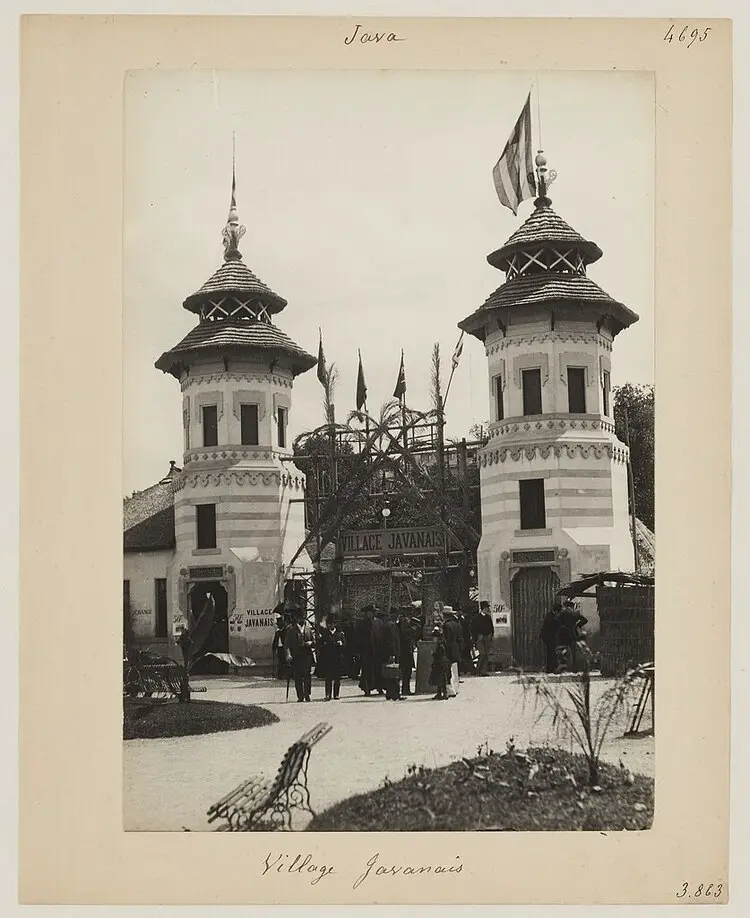
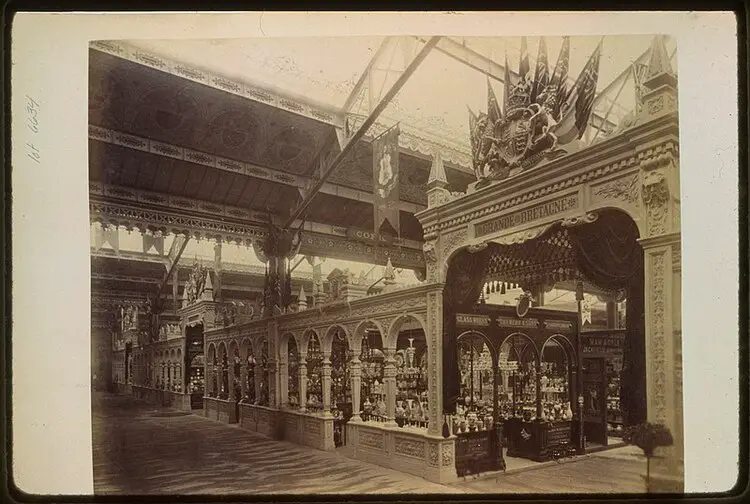
The air was filled with the aroma of international foods, and people from different countries mingled, speaking a variety of languages.
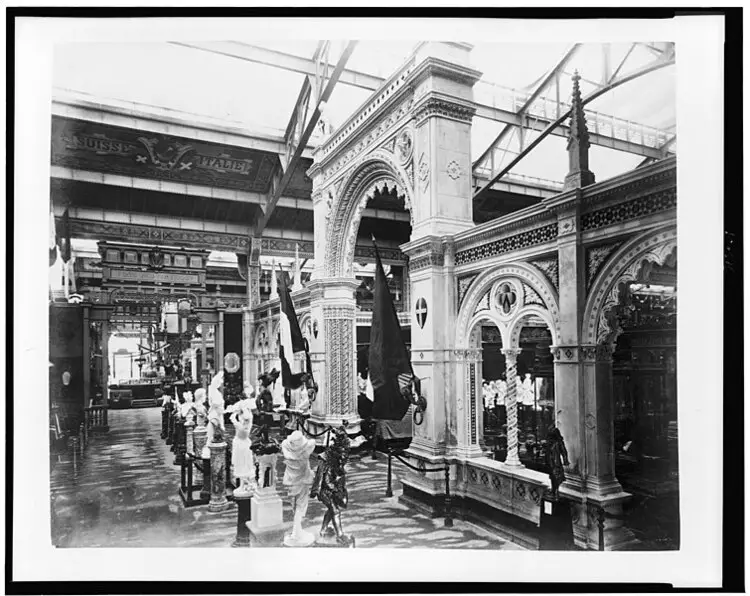
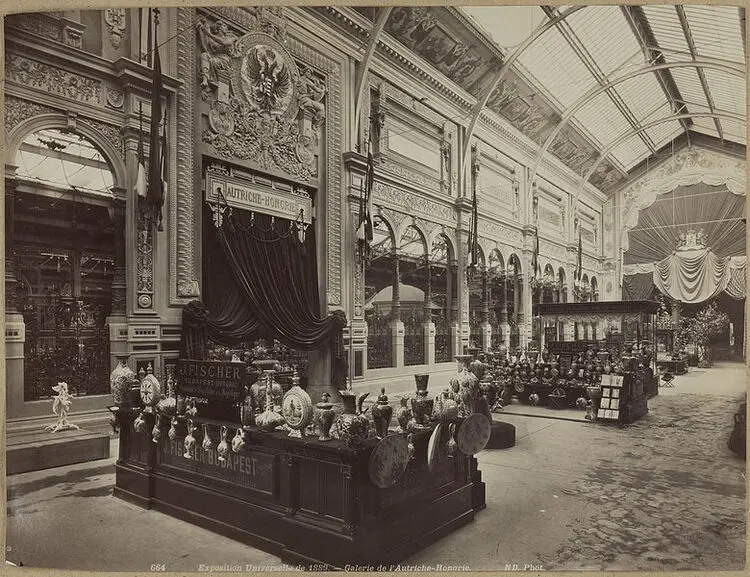
Then came the Eiffel Tower, rising above everything.
Some visitors gasped in awe, while others were unsure if they liked its bold iron structure. Regardless of opinion, no one could ignore it.
The fair had just begun, but already, it was an experience unlike anything the world had ever seen.
Walking Through the Fairgrounds
The fairgrounds stretched along the Seine River, filled with massive pavilions, bustling streets, and incredible attractions.
One of the most impressive sights was the Galerie des Machines, an enormous iron and glass building showcasing steam engines, electric motors, and mechanical inventions.
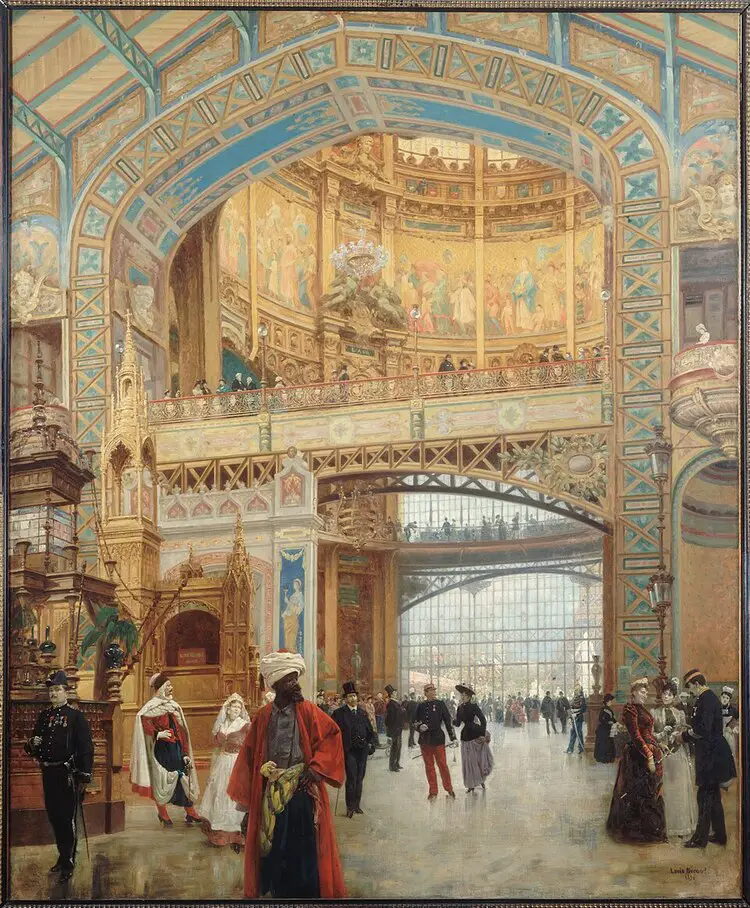
Nearby, the Palace of Fine Arts displayed masterpieces from around the world, while the Palace of Liberal Arts featured books, scientific discoveries, and new ideas shaping the future.
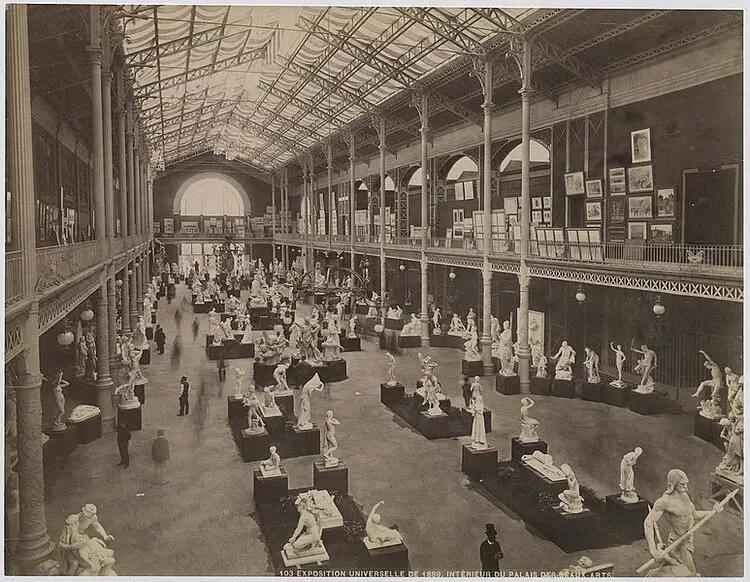
The History of Habitation Exhibit took visitors on a journey through time, displaying full-scale homes from ancient Egypt, Viking settlements, and medieval castles.
Meanwhile, the Colonial Exhibits introduced visitors to art, food, and traditions from France’s overseas territories.
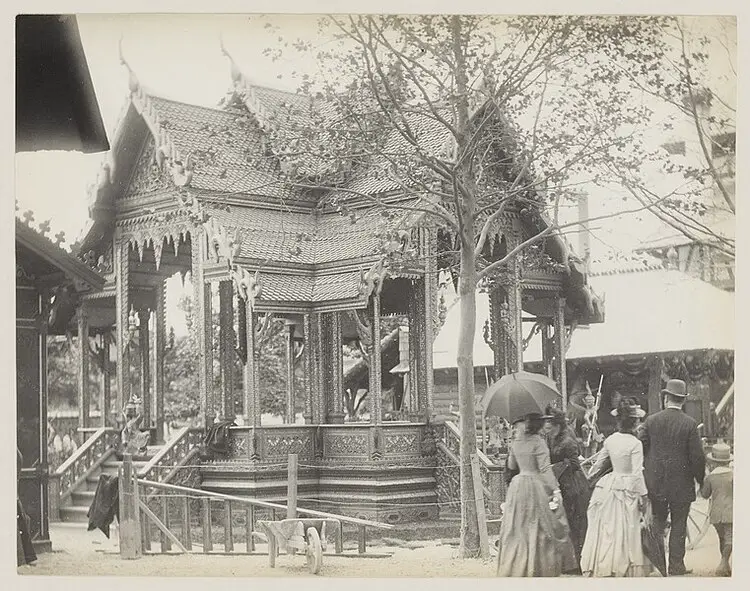
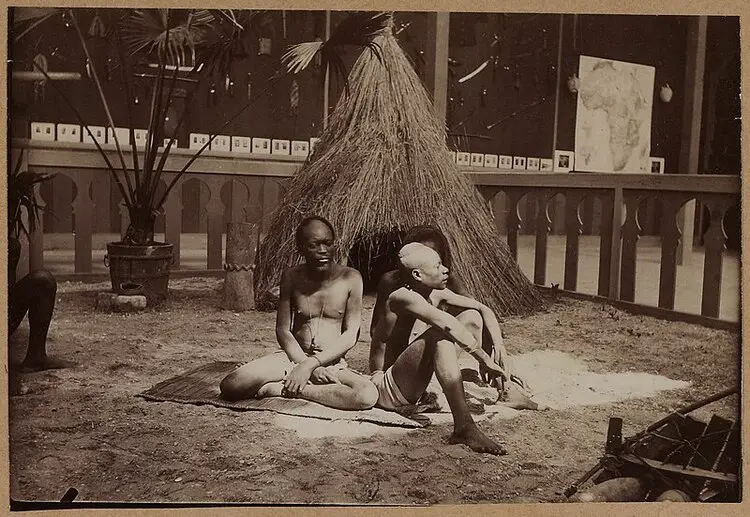
For excitement, visitors could ride a giant Ferris wheel, take a hot air balloon ride over Paris, or watch Buffalo Bill’s Wild West Show, featuring cowboys and Native American warriors.
Everywhere, street performers, musicians, and acrobats entertained the crowds, making the fair a mix of technology, culture, and fun.
The Eiffel Tower in Its First Days
At 300 meters (984 feet) tall, the Eiffel Tower was the world’s tallest structure, towering over Paris.
Before the fair, many artists and writers called it an eyesore, comparing it to an unfinished factory chimney.

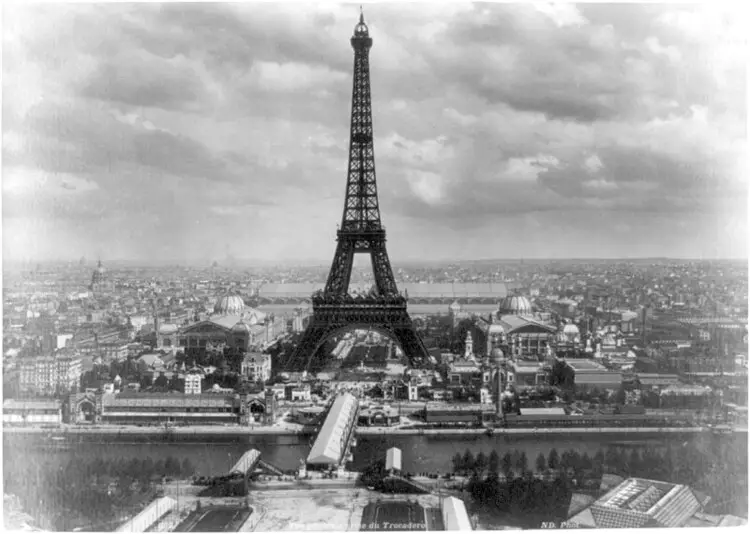
Once the exposition opened, opinions changed.
Thousands of visitors lined up to climb the tower, either by foot—1,710 steps to the second floor—or by newly designed elevators.
From the top, they enjoyed breathtaking views of Paris.
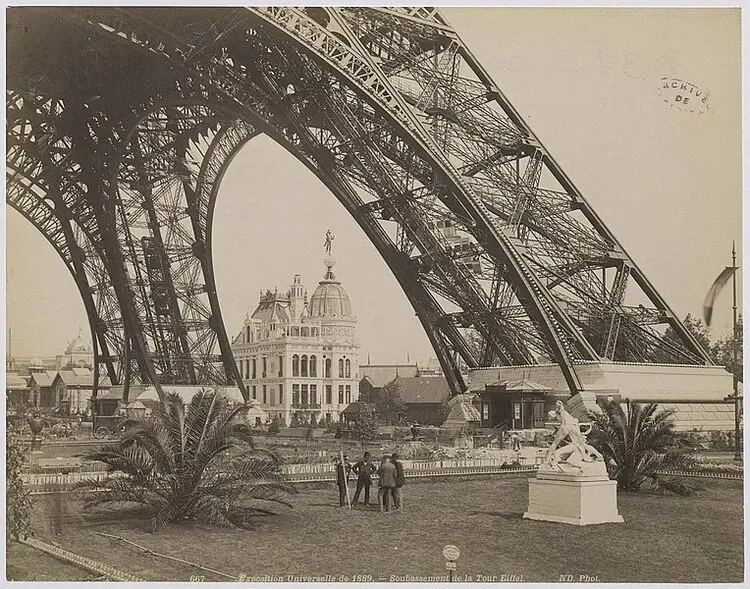
The tower’s iron framework amazed engineers, while some Parisians worried it might collapse in strong winds.
At night, 10,000 gas lamps made it glow, turning it into the fair’s most spectacular attraction.
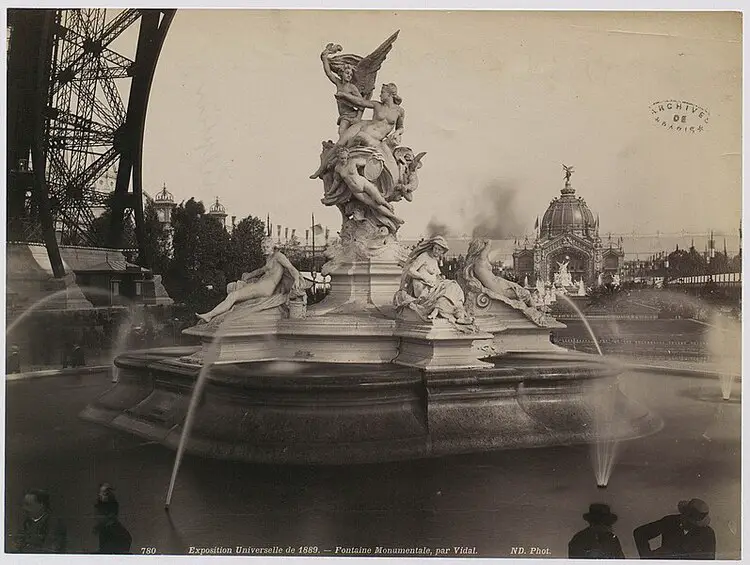
By the end of the fair, two million people had visited the tower.
Originally meant to be torn down after 20 years, it had already become a beloved symbol of Paris.
The Streets of Paris in 1889
Paris in 1889 was a city full of life. While visitors explored the World’s Fair, daily routines continued in the busy streets.
Markets were packed with vendors selling fresh bread, cheese, meats, and flowers.
At Les Halles, the city’s largest market, people could buy oysters, sausages, coffee, and exotic spices. Street sellers carried baskets of candy or flowers, offering them to passersby.
Instead of cars or a subway, Parisians relied on horse-drawn omnibuses and trams.
For the fair, a special steam train carried visitors between Champ de Mars and Les Invalides, transporting over six million people.
The Seine River boats, called bateaux-mouches, also provided a scenic way to travel.
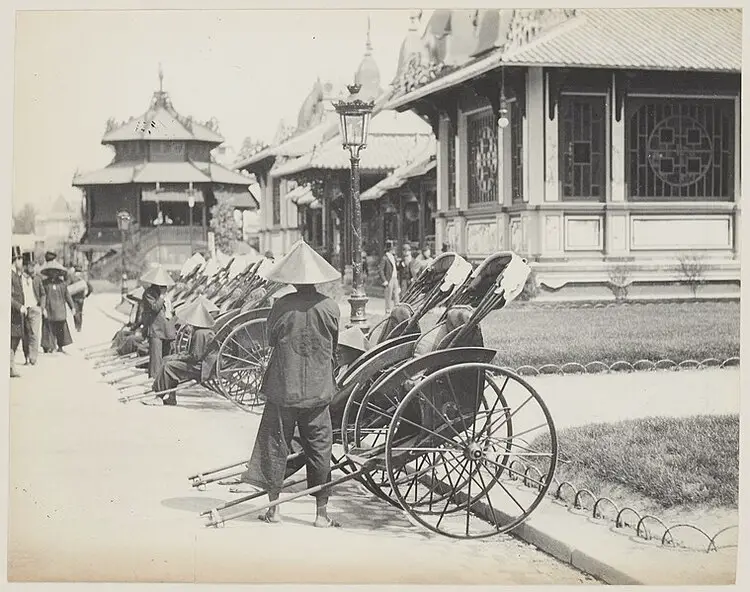
Most Parisians lived in small apartments and worked long hours.
The wealthier spent afternoons in cafés, parks, or theaters, while workers filled factories and shops. Street musicians and performers entertained the crowds, especially in lively neighborhoods like Montmartre.
Despite challenges like low wages and overcrowding, Paris remained a city of energy, blending tradition with the excitement of modern progress.
Fashion & Culture of the Time
In 1889, Parisian fashion was elegant and refined, reflecting both tradition and new influences brought by the World’s Fair.
Women’s Fashion
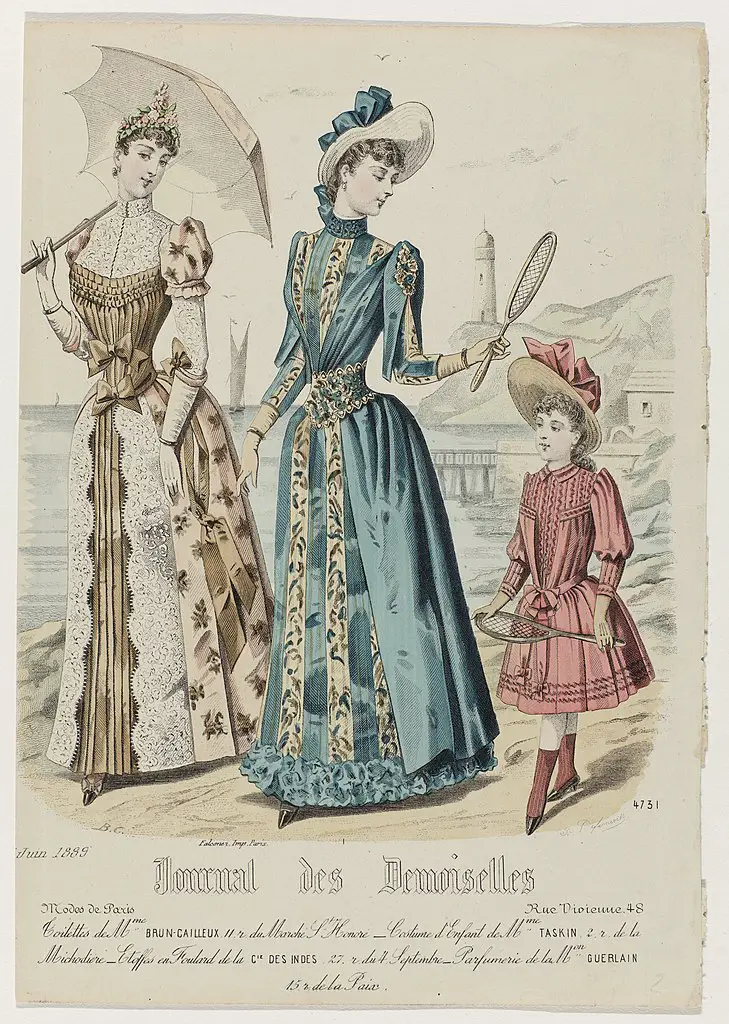
Women wore long dresses with corsets and bustles, designed to give them an hourglass figure.
Fabrics were often embroidered with lace and ribbons, while evening gowns featured beads and shimmering details.
Accessories were essential—wide-brimmed hats decorated with feathers and flowers, delicate gloves, and parasol umbrellas to shield from the sun.
Men’s Fashion
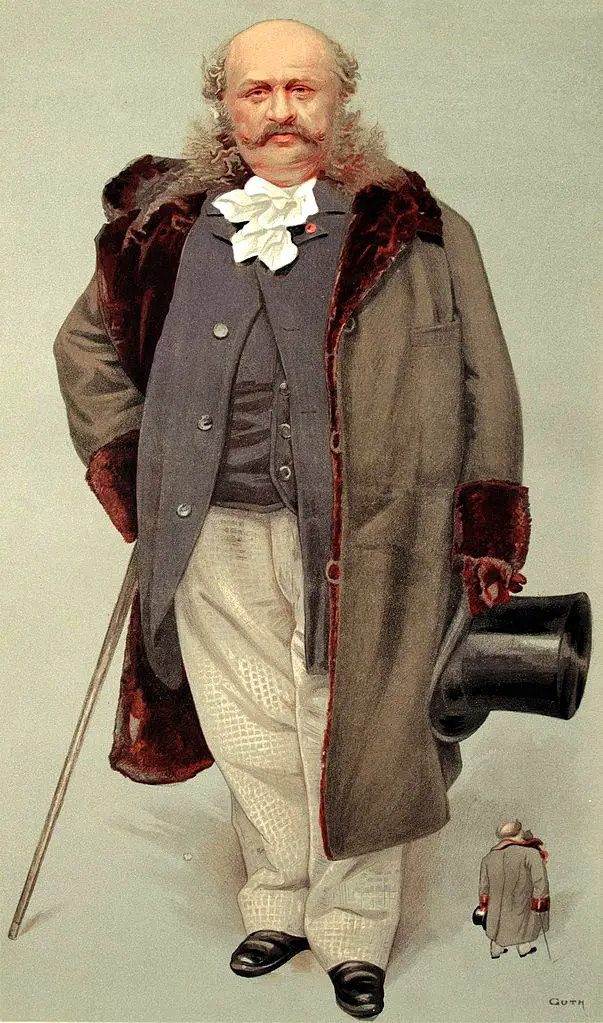
Men dressed in tailored suits with high collars, vests, and polished shoes.
The most fashionable men carried a pocket watch on a chain and kept their mustaches neatly styled with wax.
Top hats were a sign of wealth, while bowlers were more common among businessmen and workers.
Influences from the World’s Fair
The Expo introduced global styles, with silk robes from Japan, embroidered tunics from North Africa, and patterned textiles from the Middle East inspiring Parisian designers.
Luxury fashion houses like Worth and Doucet adapted these influences, while department stores like Le Bon Marché made fashion more accessible to the middle class.
Paris at Night During the Expo
As the sun set over Paris in 1889, the city transformed into a glowing wonderland.
The Exposition Universelle did not slow down at night—it became even more magical.
For many visitors, this was their first time seeing a city lit up by electric lights, and the effect was breathtaking.
The Glow of Electric Lights
The fairgrounds were covered in thousands of electric lamps, which made buildings, statues, and pathways shine.
The most spectacular sight was the Eiffel Tower, which was covered in 10,000 gas lamps, making it visible from miles away. People gathered below, staring up in amazement at this glowing metal giant.
Along the Seine River, bridges and buildings sparkled with light, their reflections dancing on the water.
Street lamps lined the avenues, casting a soft glow over the cobblestone streets, allowing Parisians and tourists to explore safely even late at night.
A City Full of Entertainment
The theaters, cabarets, and concert halls of Paris were buzzing with excitement.
The newly opened Moulin Rouge in Montmartre was packed with people eager to watch the famous can-can dancers, who twirled their skirts high to the cheers of the crowd.
Musicians played lively tunes, and performers like acrobats, magicians, and fire-breathers entertained visitors along the streets.
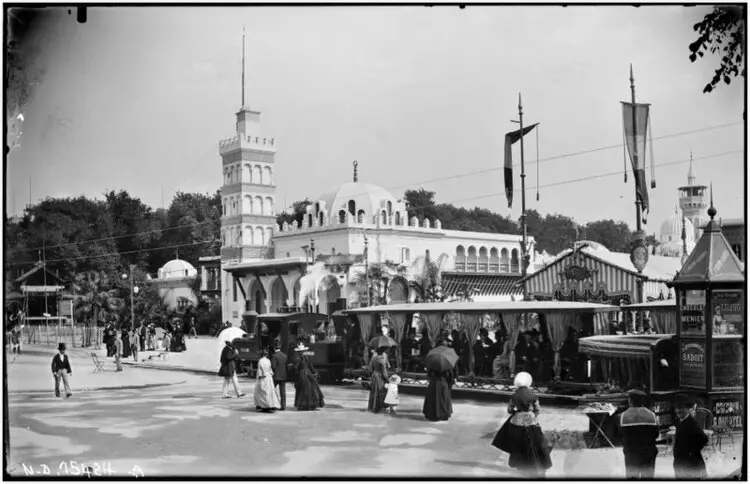
The Opéra Garnier hosted elegant performances where men in fine suits and women in sparkling gowns gathered to watch ballets and operas.
Meanwhile, in smaller cafés and music halls, artists and writers debated ideas over wine and coffee, discussing the wonders of the fair.
Midnight Feasts and Street Food
Nighttime in Paris meant food was everywhere.
Street vendors sold warm roasted chestnuts, grilled meats, and fresh pastries to hungry visitors walking through the fair.
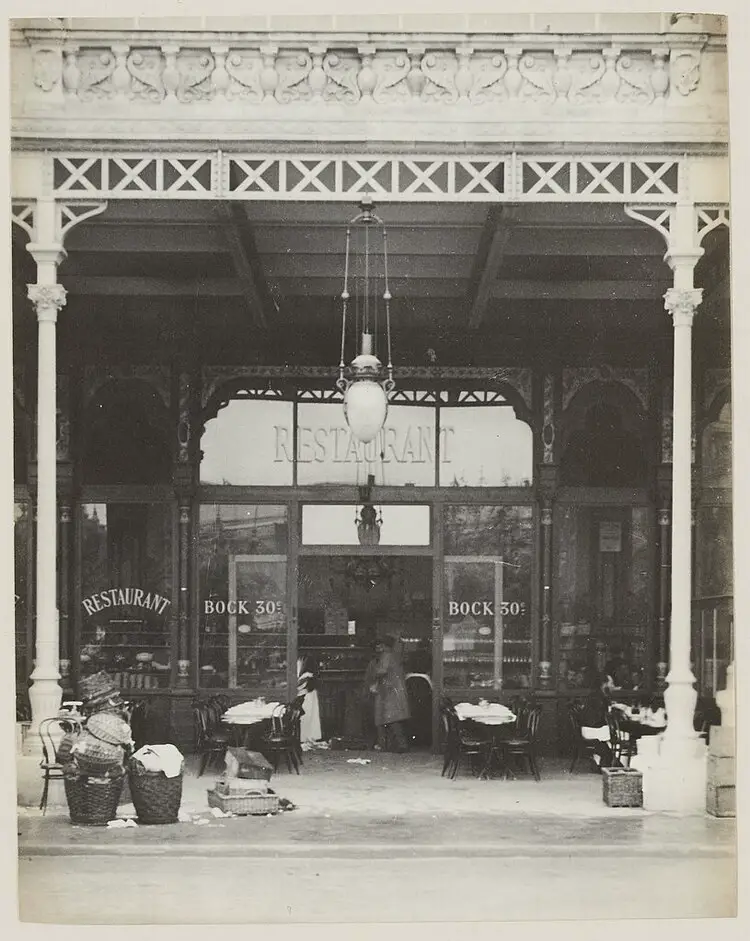
Cafés stayed open late, serving hot chocolate, fine wines, and delicate pastries. Restaurants near the fairgrounds served elaborate meals, where guests could try exotic dishes from the international pavilions, like Moroccan tagines or Asian stir-fried noodles.
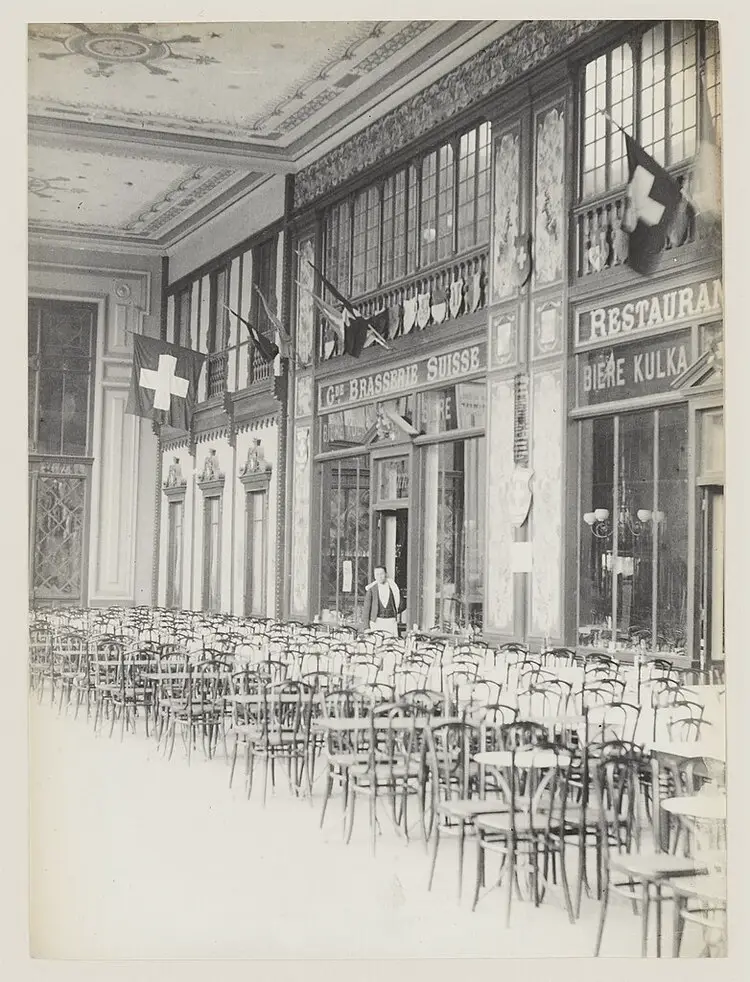
In the more elegant parts of the city, the rich gathered in grand hotels and private salons for midnight feasts with gourmet cheeses, oysters, and champagne.
Fireworks Over the Seine
Some nights, the fair ended with huge fireworks displays over the Seine River.
The sky lit up with bursts of red, gold, and blue, reflecting off the water as thousands of people watched in awe.
The explosions echoed through the streets, adding to the feeling that Paris was the most exciting place in the world.
Whether strolling through the glowing fairgrounds, watching a thrilling show at the Moulin Rouge, or dining under the stars, Paris at night during the 1889 Expo was a city of wonder, energy, and endless magic.

With a passion for travel and having visited over 50 countries, Dorian is eager to share his favorite spots and expert tips to help you explore Paris and France like a local.

